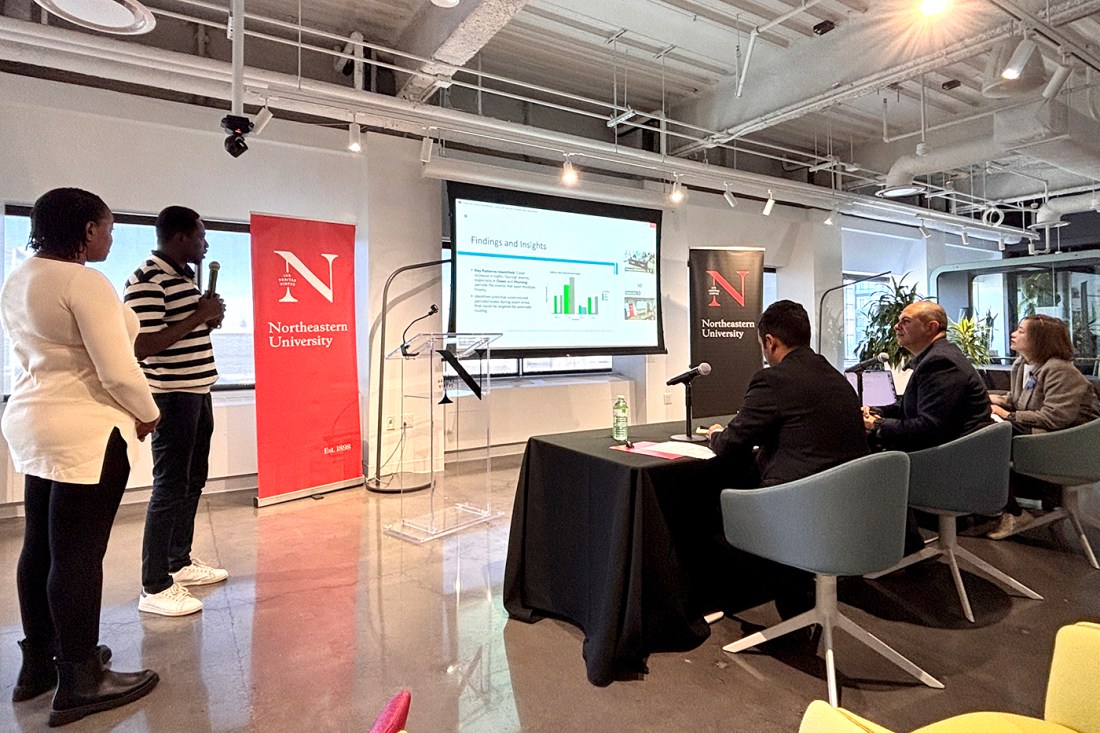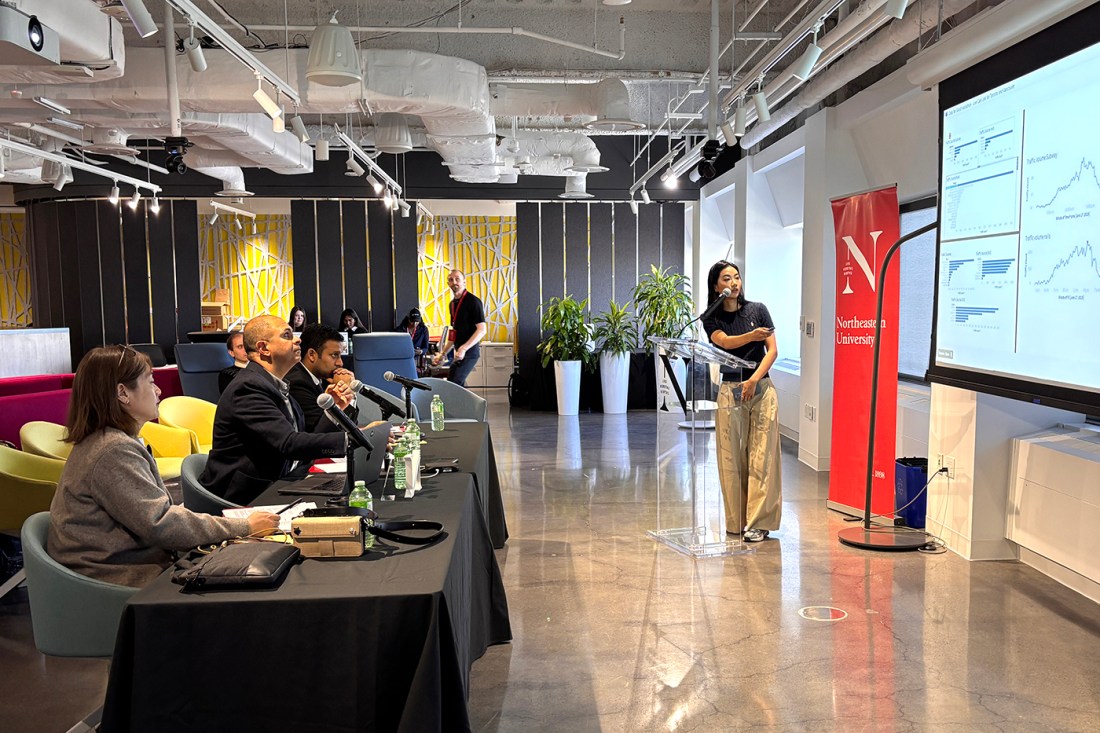Toronto concert traffic is bad. Northeastern students are trying to change that ahead of Taylor Swift’s Eras tour
Students from Northeastern’s Toronto and Vancouver campuses participated in a hackathon to try to predict traffic patterns that can paralyze the city.

Taylor Swift is performing six shows in Toronto over the next two weeks, marking the tail end of her Eras tour. Her presence also marks “trouble, trouble, trouble” — as the singer once sang — for the city’s traffic situation.
Congestion in Toronto gets so bad during events that Irish singer and former One Direction star Niall Horan had to leave his car and walk to the venue for his own show this summer after getting caught in bumper-to-bumper traffic.
But Northeastern and its students are looking to change this. The university recently hosted a hackathon for students on its Toronto and Vancouver campuses where they were challenged with analyzing data from a past Lady Gaga concert to predict traffic flow during Swift’s shows that can be used to help alleviate traffic for events.
The winning team of students from Northeastern’s Vancoucer campus found through analysis that concert-goers tend to arrive in Toronto through a concentrated area, but then disperse when leaving. This information can help the city when managing future events, said Yvonne Leung, an assistant teaching professor in analytics who helped organize the event.



“We could use the data to predict how people move and give real time insight to help the city manage traffic,” Leung said. “We can understand on different dates, times, or events how people move.”
The winning team took the data of people’s movements throughout events and used a web-based interactive computing platform, Jupyter Notebook, to generate coordinates to accurately determine where exactly people were moving. They then created charts in Infogram, a web-based interactive visualization platform, to illustrate the data in a way that was easy to understand.
The winning team of three, who are all master’s degree students in the computer science program in Vancouver, said they wanted to participate because the hackathon offered a good way to learn practical skills like GIS mapping.
“We just wanted to be involved and I thought this hackathon was for good (because) it contributes to local communities,” said Hao Niu, a third-year computer science grad student in Vancouver.
Niu was paired with fellow Vancouver students Panxin “Claire” Liu, a first-year computer sciences master’s degree student, and Zheng Gu, a second-year computer science master’s degree student. None of the students knew each other prior, but met up to work on the problem in person.
The group said they learned how to use GIS, a computer system that analyzes and displays geographic information. The day-long hackathon offered them the chance to learn these new skills and then apply them to the challenge.
“We did have some pretty good ideas before we got the data,” Liu said. “After receiving the data, it was checking on it and trying to visualize it on the maps.”
Featured Posts
The group ultimately found that traffic was more concentrated when people were heading inbound toward the city center, particularly as fans arrived from the airport. But the crowds dispersed as people exited the city after the event or went to explore Toronto, demonstrating a need for adaptive traffic control after concerts end.
The number of people traveling on any one route can reach hundreds of thousands, the group found.
“We tried to present a community-focused idea instead of being distracted by the influence of different arts,” Niu said. “Regardless of how many fans you have, the arena capacity’s fixed. We didn’t focus on the artists, but instead, what are the influence of the local communities?”
The group did suggest in the final presentation that the data could be used to also help first responders position themselves in high-traffic areas in case of emergencies.
The hackathon was judged by officials from Northeastern and the city of Toronto, including the director of traffic management.
“The judges are professionals in the industry,” Liu said. “I feel like their suggestions are super valuable.”










